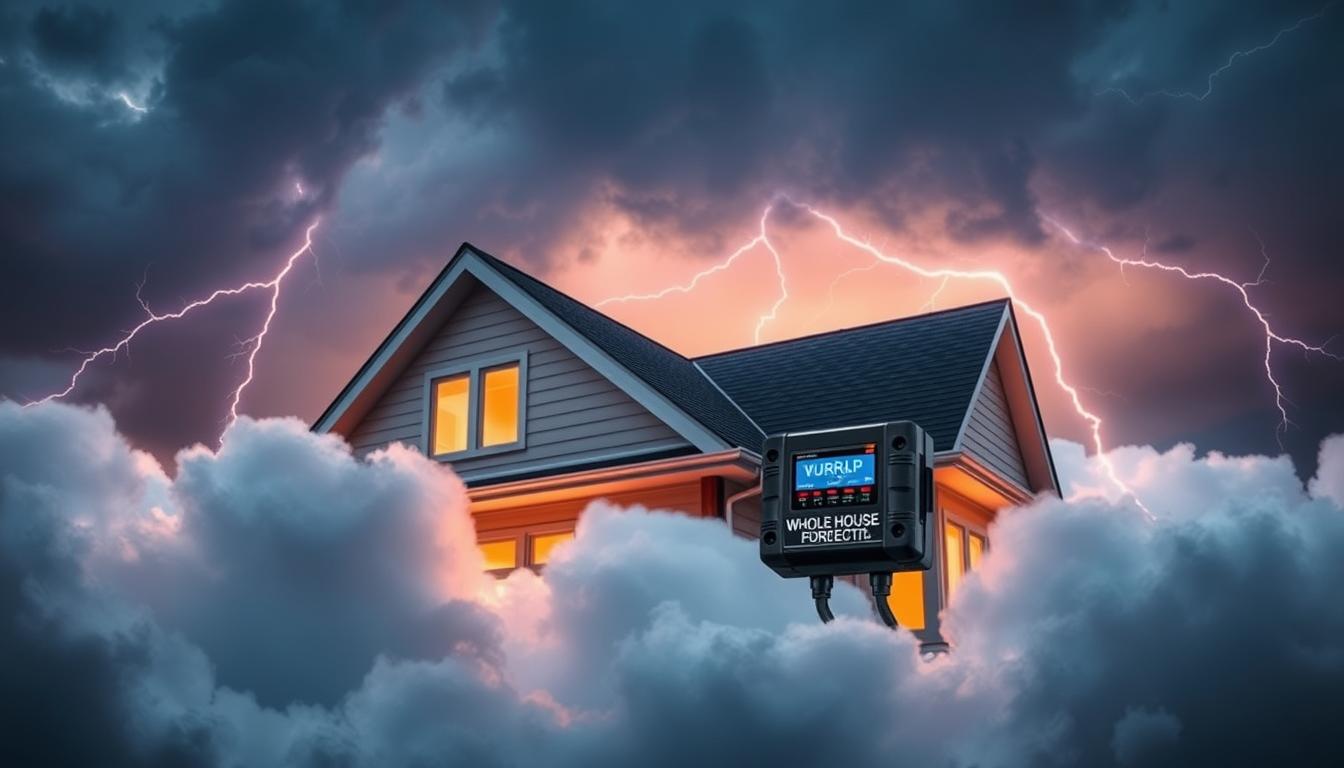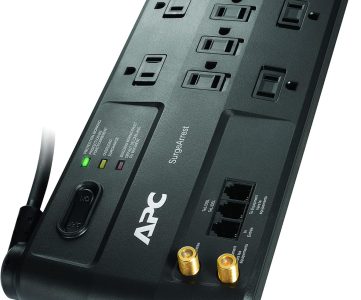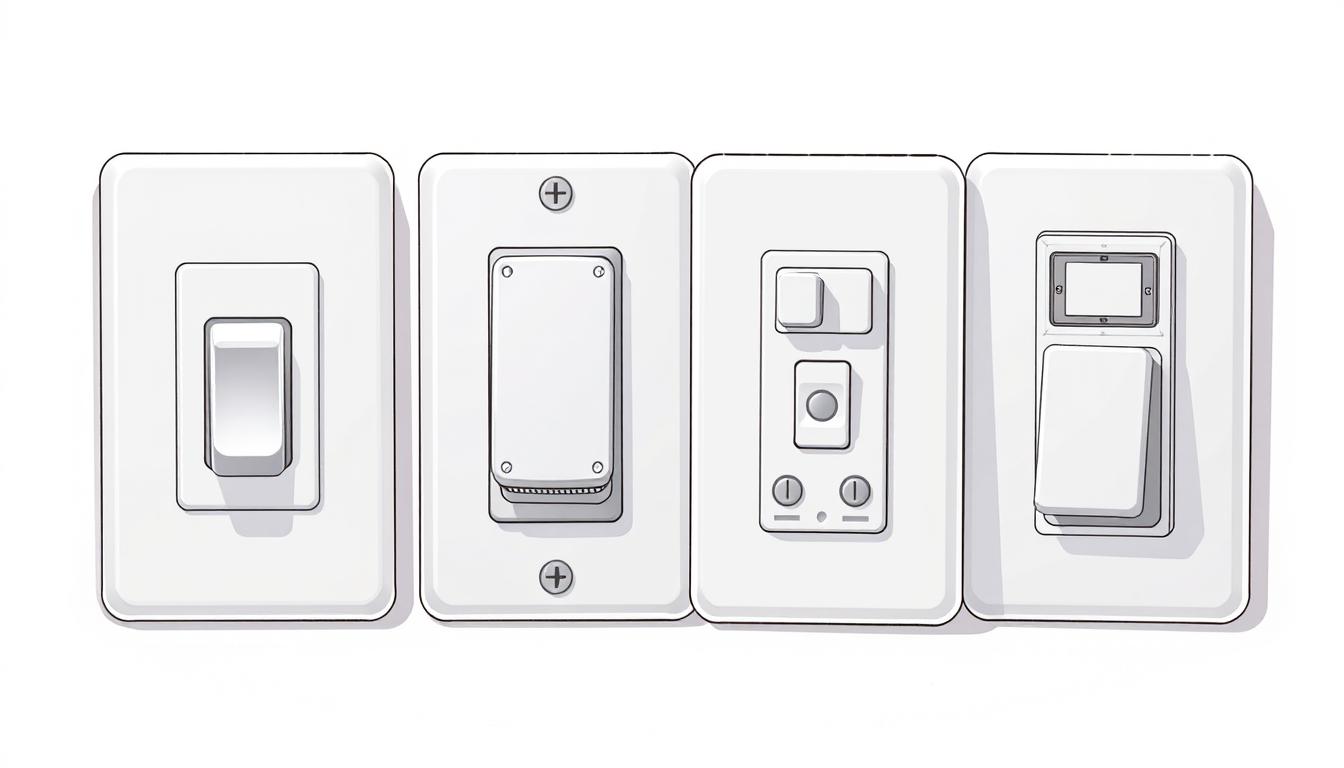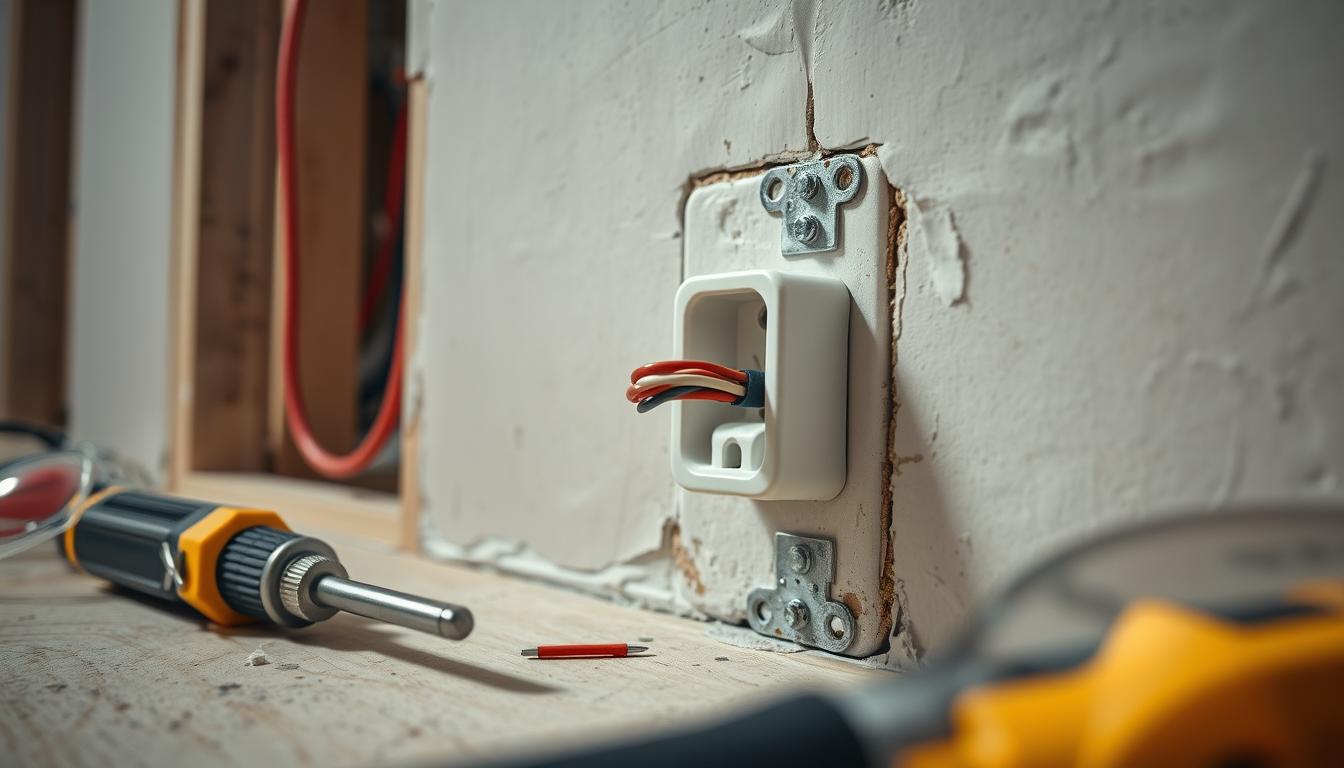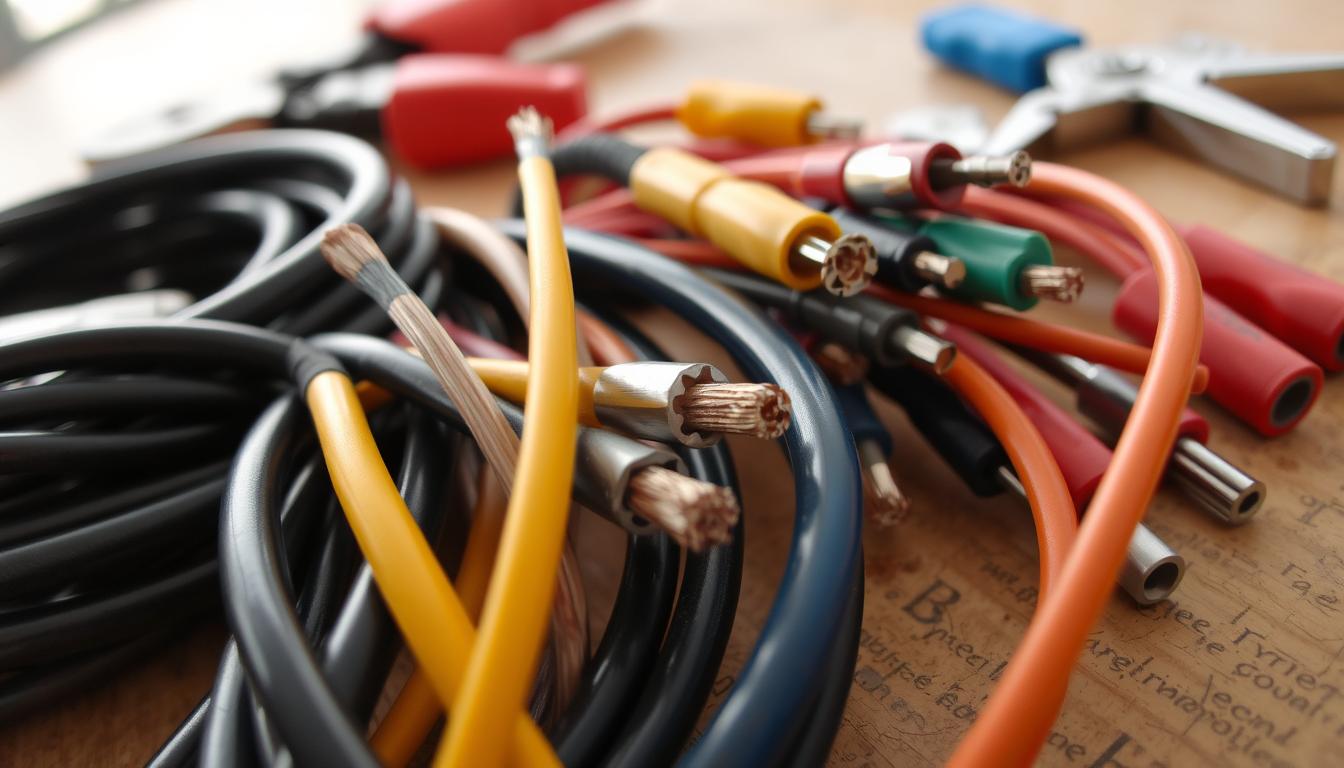Protecting your electronics and equipment from power surges is key for homeowners. Surge protection is vital for your home’s electrical safety. Whole-house surge protection systems offer better protection than point-of-use solutions.
These systems use surge suppressors to keep your electrical system safe and reliable.
Getting whole-house surge protection gives you peace of mind. It helps protect your electronics and equipment from damage. This means you won’t have to spend a lot on repairs or replacements.
Surge protection is a smart investment for any homeowner. With the right system, you can have a secure and reliable electrical system.
Key Takeaways
- Whole-house surge protection systems provide comprehensive protection for your home’s electrical system
- Surge suppressors help prevent damage from power surges
- Whole-house surge protection is more effective than point-of-use solutions
- Surge protection can prevent costly repairs or replacements
- Investing in surge protection can provide peace of mind and protect your valuable investments
- Whole-house surge protection systems are a essential investment for any homeowner
Understanding Whole-House Surge Protection Systems
Protecting your home from electrical surges is crucial. Whole-house surge protection systems offer comprehensive protection. They keep your home and all your equipment safe. By getting a whole-house surge protection system, you can make sure your appliances and electronics last longer.
Equipment safety is a big part of whole-house surge protection. It keeps your devices safe from power surges. This means you won’t have to worry about expensive repairs or replacing your appliances.
What Is Surge Protection?
Surge protection helps keep your home’s electrical system safe from surges. It includes using surge protectors. These devices absorb or divert excess energy to protect your equipment.
How Whole-House Protection Differs from Point-of-Use Solutions
Whole-house surge protection systems are different from point-of-use solutions. They protect your entire home, not just individual appliances. This means all your devices are safe, no matter where they are in your home.
Components of a Complete System
A complete whole-house surge protection system has several key parts:
- Surge protectors
- Circuit breakers
- Fuses
- Grounding systems
These parts work together to give you comprehensive protection. They ensure your home and appliances are safe, giving you peace of mind.
The Growing Need for Home Surge Protection
Homes today are filled with more sensitive electronic devices than ever before. This makes them more at risk for power surges. These surges can harm or destroy expensive items, leading to big financial losses. The danger of power surges is increasing due to weather events, grid issues, and more devices in our homes.
Several factors are making homes more vulnerable to power surges. These include:
- More use of sensitive devices like smartphones, laptops, and smart home systems
- More frequent and severe weather events like thunderstorms and hurricanes
- Older grid systems and power distribution
Homeowners need to act now to protect their homes and devices from power surges. Installing whole-house surge protection systems is a good step. These systems offer broad protection against power surges and other electrical problems.
By understanding the risks and taking action, homeowners can keep their devices and appliances safe. This helps avoid financial and emotional stress caused by power surges.
Common Causes of Electrical Surges in Modern Homes
Electrical surges can happen in modern homes for many reasons. These include things outside and inside the home. Knowing why they happen helps us avoid damage. Using the right installation methods is key to preventing these issues.
Lightning and power grid problems are common outside causes. Inside, faulty appliances can also lead to surges. Weather like thunderstorms and cold snaps raises the risk even more.
External Surge Sources
- Lightning strikes
- Grid power surges
Internal Surge Sources
- Appliance malfunctions
- Electrical panel issues
Seasonal Factors Affecting Power Surges
Seasons like summer and winter can make surges more likely. It’s important to think about these when setting up installation methods for surge protection.
Knowing what causes electrical surges helps us take steps to prevent them. By using the right installation methods, we can keep our homes and appliances safe.
Benefits of Professional Installation
Getting a whole-house surge protection system installed by a pro is key for device safety. A skilled installer knows how to set it up right. This makes sure it works as it should.
The perks of getting a pro to install include:
- Right setup of the surge protection system, vital for device safety
- Knowing the system works right, giving homeowners peace of mind
- Following local rules and codes, avoiding fines or penalties
A pro can also check your home’s electrical system. They’ll suggest the best surge protection for your home. This means your system will fit your home’s needs perfectly, keeping your devices safe.
Choosing a pro for your surge protection system means it’s done right. You can count on it to keep your devices safe for a long time.
Installation Process and Requirements
Installing a whole-house surge protection system is a big step. First, you need to understand the process and what’s required. This means doing a detailed check of your home before starting. This check helps figure out the best protection levels for your system.
Getting the right permits and following local rules is also key. This makes sure the system is set up right and safe. It helps avoid any risks or dangers from not following the rules.
Step-by-Step Installation Overview
The steps to install a surge protection system are clear:
- Disconnecting the main electrical panel
- Installing the surge protection device
- Connecting the device to the main electrical panel
- Testing the system to ensure it is functioning correctly
It’s important to have a licensed electrician do the job. They know how to install these systems right. They’ll make sure your home gets the protection it needs.
Knowing how to install a surge protection system is key. It ensures your home is safe from power surges and electrical spikes. This gives you peace of mind, knowing your home and appliances are protected.
| Installation Step | Description |
|---|---|
| Pre-installation assessment | Determine the specific needs of your home |
| Obtaining permits and regulations | Ensure compliance with local electrical codes and standards |
| Installation of surge protection device | Connect the device to the main electrical panel |
Selecting the Right Surge Protection Level
Protecting your home from power surges is key. You need to pick the right surge protection level. This means knowing about the different surge suppressors and what they can do. These devices help absorb or divert power surges, keeping your electrical devices safe.
The right surge protection level depends on several things. These include your home’s size, the devices you use, and how often power surges happen in your area. It’s important to think about these when picking a surge protection system. This way, you make sure you get the right amount of protection.
Protection Ratings Explained
Protection ratings are measured in joules. This shows how much energy a surge suppressor can handle. A higher joule rating means it can deal with bigger power surges. So, when you’re choosing a surge protection system, look for a high joule rating. This ensures you get enough protection.
Recommended Specifications for Different Home Sizes
Here are some recommended specs for different home sizes:
- Small homes (less than 1,500 square feet): 400-600 joules
- Medium homes (1,500-3,000 square feet): 600-1,000 joules
- Large homes (more than 3,000 square feet): 1,000-2,000 joules
Choosing the right surge protection level is crucial. It keeps your home and devices safe from power surges. Remember to consider the factors mentioned and look for a high joule rating when picking a surge protection system.
| Home Size | Recommended Joule Rating |
|---|---|
| Small | 400-600 joules |
| Medium | 600-1,000 joules |
| Large | 1,000-2,000 joules |
Cost Considerations and ROI
Homeowners often worry about the cost of whole-house surge protection systems. The upfront cost can seem high. But, it’s important to think about the long-term benefits and potential return on investment (ROI).
Protecting valuable equipment with surge protection can save money in the long run. It helps avoid expensive repairs and replacements.
Some key costs to consider are:
- Initial installation costs
- Ongoing maintenance and inspection costs
- Potential savings from avoided repairs and replacements
Investing in a whole-house surge protection system gives homeowners peace of mind. It protects their equipment from power surges and spikes. This can lead to big savings and a strong ROI.
For equipment safety, a whole-house surge protection system is a must-have. It guards against power surges and spikes. This ensures equipment lasts longer and works better, saving money on repairs and replacements.
Maintenance and Monitoring of Your Surge Protection System
To keep your whole-house surge protection system working well, regular care and checks are key. This means looking at the system’s parts and how it works to spot any problems early. This way, you can fix them before they cause bigger issues.
Regular checks can find issues like worn-out parts that might not protect your electrical stuff. It’s important to set a schedule for these checks. This helps stop power surges from harming your appliances and gadgets.
Regular Inspection Guidelines
- Check the system’s components for signs of wear or damage
- Verify that all connections are secure and not loose
- Test the system’s performance to ensure it is functioning correctly
Warning Signs of System Failure
If you see anything odd or if your system seems to be failing, act fast. This could mean burning smells or sparks. Some signs that your system might be failing include:
- Flickering lights or appliances
- Unusual noises or smells
- Overheating of components
By following these tips and staying on top of maintenance, you can keep your surge protection system working well. This protects your home and all your electrical devices.
| Component | Inspection Frequency | Replacement Interval |
|---|---|---|
| Surge arresters | Every 6 months | Every 5 years |
| Panel components | Every 12 months | Every 10 years |
Common Mistakes to Avoid
When setting up whole-house surge protection systems, proper installation methods are key. A common error is choosing the wrong size for the surge protection device. This can mean the system doesn’t work right or costs too much.
Another mistake is not thinking about the installation methods and needs for your system. This can lead to a system that doesn’t ground or connect properly. This makes it less effective at protecting against surges.
To steer clear of these mistakes, always follow the manufacturer’s guide. Also, think about your home’s electrical panel and wiring. Getting a pro to install the system is a smart move. It ensures it’s done right and safely.
- Improper sizing of the surge protection device
- Not considering the specific installation methods and requirements
- Not hiring a professional to install the system
Knowing these common mistakes helps homeowners. It ensures their whole-house surge protection system works well. This protects against electrical surges effectively.
Conclusion: Securing Your Home’s Electrical Future
Investing in a surge protection system is key to protecting your home’s electrical setup. It keeps your appliances and electronics safe from power surges. This ensures your home’s electrical systems work well for a long time.
Power surges can come from many sources and can cause serious damage. Working with a trusted installer helps you get a surge protection plan that fits your home. This way, you’re ready for any electrical issues that come your way.
Choosing whole-house surge protection is more than just saving your stuff. It’s also about keeping your home safe and healthy. Start protecting your electrical future today. Your home and family will thank you for it.
